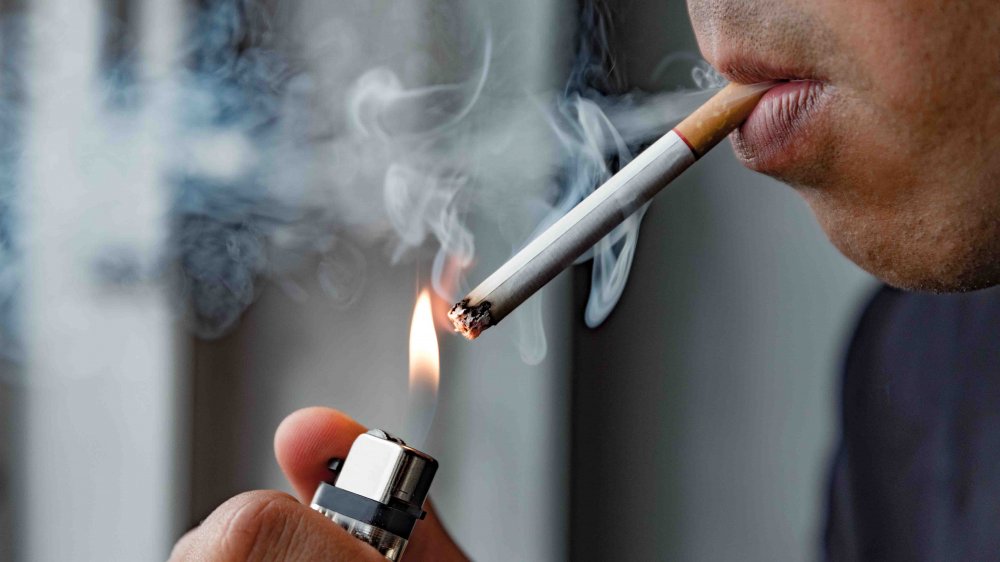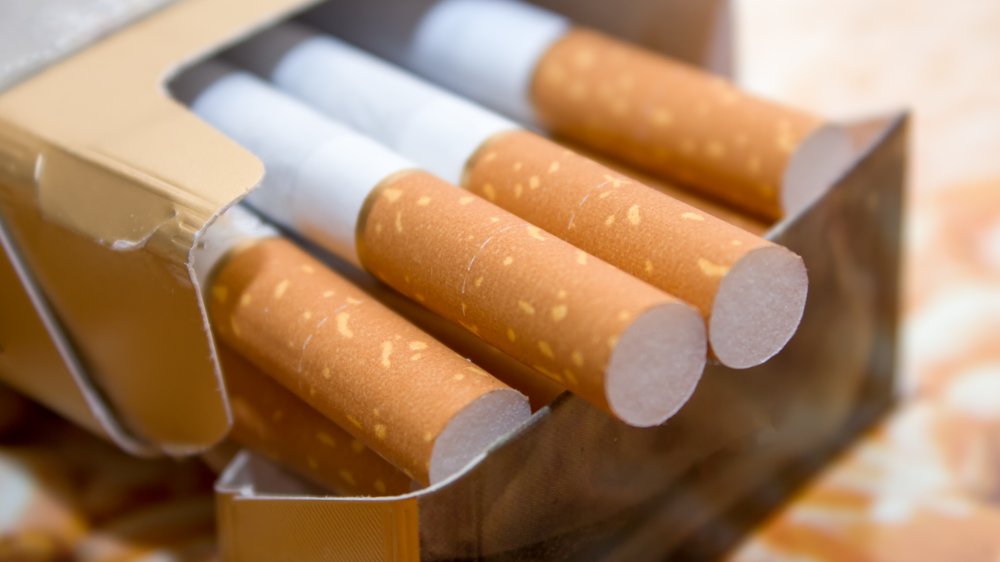Strange Things People Used To Believe About Smoking Cigarettes
"Light up a Lucky! It's light-up time! Be happy! Go Lucky! ... Relax — it's light-up time!" Radio comedian Jack Benny was famous in his day (and kidded endlessly) for selling Jell-O, but before that jingle, there was Lucky Strike Cigarettes — LSMFT — "Lucky Strike Means Fine Tobacco!" Because, apparently, there was good tobacco, and not-so-good tobacco in those days. But really, it was all good. That's what the doctors said, anyway.
Native Americans had been using tobacco for ceremonies and medicinal purposes for thousands of years when Europeans landed in North America, according to Swedish Medical Center in Seattle. Columbus brought it back to Europe, and it was considered good clean fun — even healthful, a cure-all, for anyone. It reached a point that in 1642, Pope Urban VIII had to decree that anyone in Seville using tobacco during Mass would be excommunicated. That included priests, says Catholic World Report. Apparently he thought that using snuff or lighting up a cigar during Mass was unseemly. Go figure.
It was healthier to reach for a cigarette instead of a sweet
It took a couple of hundred years, but some members of what passed as the medical profession started to ask whether tobacco was really such a good idea after all. Addiction was noted in the 1700s, as was what seemed to be damage to respiratory systems. There had always been those who thought it was a nasty habit, whether cigarette, pipe, cigar, snuff, or chaw, and in 1632 Massachusetts, the old spoilsports, passed a law prohibiting smoking in public.
Which just couldn't be right, because smoking was good for you. Just ask the thousands of doctors who endorsed one brand or another for the health benefits. American Tobacco — they made Lucky Strikes, coincidentally enough — was the first to draft doctors, according to History. In a 1930 ad campaign we learned that Luckies, according to the sawbones, were "less irritating" than other, lesser brands. (The company also sent free cartons of smokes to polled doctors. Probably for research purposes. Probably.)
Healthy? People began to be suspicious
The National Center for Biotechnology (NCBI) relates that a majority of physicians themselves smoked. In 1946 the RJ Reynolds Tobacco Company let people know that "More doctors smoke Camels than any other cigarette." Other ad campaigns instructed women, especially, that they could control their weight ("stay slim") if they would simply "Reach for a Lucky instead of a sweet." (To be fair, that advice was also given to the military, touted by a lieutenant general shilling for our old friends, Lucky Strikes.)
Camels touted themselves as good for the digestion in 1937. Chesterfields were "as pure as the water you drink," as All That's Interesting reports. Cigarettes boosted energy ("too tired for fun — and then she smoked a Camel!") and helped you wind down after a workout ("first a cigarette, then a shower"). Some claimed to be good for asthma (yes, you read that right), and of course, the dentists got into the act, too, recommending one brand or another. Medicos weren't the only ones; celebrities picked up endorsement money, including future president Ronald Reagan, then a popular film actor, whose face appeared in a series of print ads for Chesterfields in the 1940s, according to Mental Floss.
Thank goodness that actual research was conducted eventually, leading to the 1964 Surgeon General's report, Smoking and Health, which started to drive nails into the coffin of the coffin nails industry. About time. (Not light-up time.)


